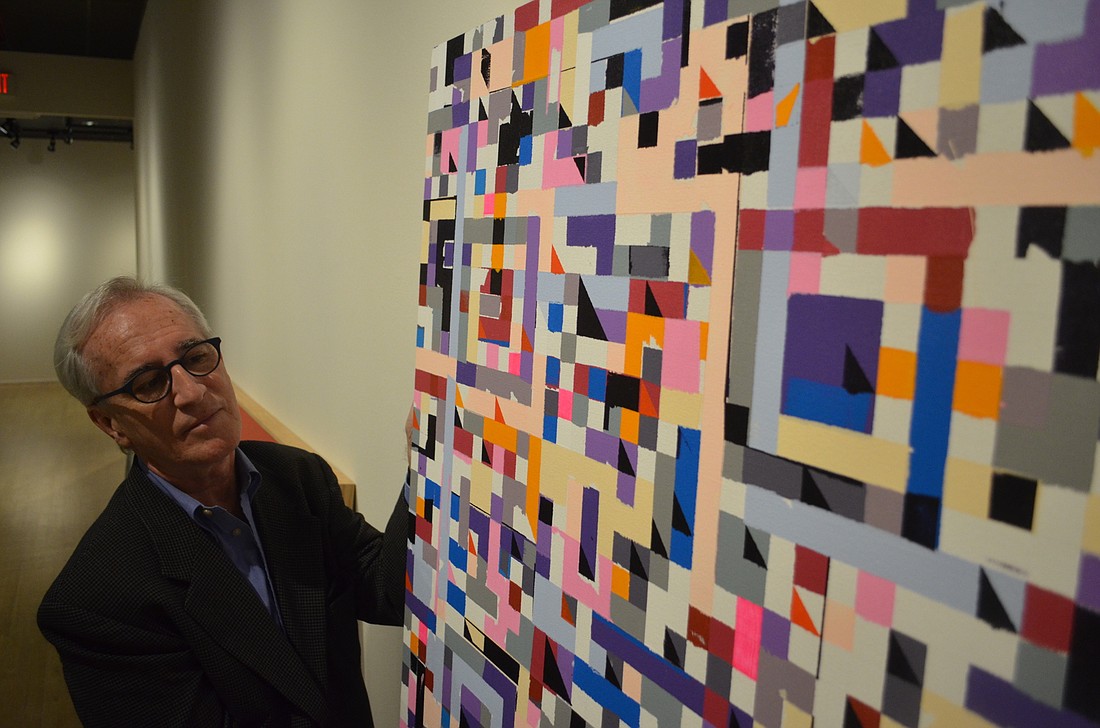- November 13, 2025
-
-
Loading

Loading

Mark Ormond thought the carpet was all wrong. Besides being an aesthetically unpleasing combination of gray and green, the flooring clashed with Ormond’s vision for the upcoming exhibition. He wanted to create a dialogue about Joel Shapiro's abstract works — not about the distracting flooring.
It was 1986, his second year as the curator of exhibitions at the John and Mable Ringling Museum of Art. Even though he was still relatively new, Ormond knew he needed to make that carpet disappear to make the exhibition successful. So, he went to his superiors and got permission. The maintenance crew pulled up the carpet and placed it in storage, and a contractor placed wood flooring down just for the exhibit. Ormond will go to great lengths to make a work of art shine.
As curator of exhibitions at the Ringling College of Art and Design, Ormond plans a year in advance for the more than a dozen student and professional shows exhibited each year. Featuring everything from sculpture, painting and photography to a floor full of cassette tapes and tree branches, Ormond helps artists present their work in the best possible light — literally.
“It is theater, in way, constructing and assembling an exhibit,” says Ormond. “You have to create a mood in a gallery and place and light the art in the right way that supports the artist’s vision. If people are thrown off by the placement of the pieces or notice that lighting, then I’ve not done my job.”
For the last 30 years, Ormond has worked with exhibits not only at his jobs at the John and Mable Ringling Museum of Art and Ringling College, but also the Greene Contemporary Gallery, the Allyn Gallup Contemporary gallery and Art Center Sarasota.
"I'm always looking for new places to hang and exhibit work. An empty hallway is a new opportunity." - Mark Ormond
Ormond came to Sarasota for the first time in 1984, to interview at the Ringling Museum.
Whenever he visits a town, he grabs the local newspapers to get a sense of its character. He was astounded that a town the size of Sarasota had five different newspaper boxes that featured six or seven arts writers. He knew he had found his place.
"Sarasota is serious about its art and culture, and what I love about Sarasota is this constant exchange of ideas going on in people in the arts," Ormond said.
It took a little while for Ormond to find his path to the arts. Originally entering the University of Pennsylvania to be a veterinarian, Ormond, whose father was an insurance executive and whose mother was a research chemist, had an epiphany his sophomore year: He didn’t want to be in medicine; he wanted to be in art.
“I took architectural drawing, studio painting and as many art and art history courses that I could,” Ormond says. “I knew I wanted to be involved and around art every day.”
Ormond loves his job as the Ringling College’s curator because it allows him to fulfill that goal and pursue another — to convert the masses to art-lovers.
He doesn’t want people to attend an opening and never step foot in a gallery otherwise. He wants them to learn more about the people creating the art, to get involved. To him, that’s what a vibrant arts community is all about.
Despite working at an arts college, Ormond isn’t high-brow about art. He’s more about accessibility than academia.
He wants people to see, to think and to feel.
To create contemporary exhibits that illicit these responses, planning is paramount.
Ormond starts in his head, crafting a vision for each show. Based on the theme, he arrives at an idea for the exhibit, then adapts it based on what he finds when he visits artists.
He abides by the same rule he tells his art history students at Ringling College: Touch and see the art in person.
Ormond's approach to his next show, “Defining Abstraction,” which opens July 10 and runs through Aug. 5 in the campus’s Selby Gallery, is like every other.
He spent months visiting each artist in his studio or gallery to look for pieces that fell under the theme of Sarasota and Southwest Florida abstract art.
Pulling these pieces together is then one part planning and one part design.
Using floor plans of each gallery, he uses post-it notes with the name or image of each piece to make sure everything will fit. Once the art arrives, ideally, Ormond likes five days to hang and study the show before opening night to make any last-minute changes.
Ormond and his his long-time preparator and hanger Trevor Dienes go back and forth among the Ringling College's seven different gallery spaces that differ in floor space, wall height and lighting capabilities.
But no matter if it is a solo show focused on a veteran artist or the often chaotic scene at the end of the academic year where Ormond helps present an army of graduating seniors' final projects, Ormond wants to make sure each exhibit — and its pieces — are something the community will talk about.
“My favorite part of the process is seeing everyone come on opening night,” says Ormond. “The art is bringing strangers together for the first time to talk about life and art.”